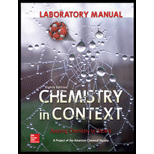
Concept explainers
(a)
Interpretation:
The ionic compound name and the chemical formula that can be formed from
Concept Introduction:
Ionic compound is formed from a metal and a non-metal. Metal forms a cation while non-metal forms an anion. Ionic compound is composed of ions present in fixed proportions. They gave a regular geometric structure and are arranged in regular manner.
Ionic compounds are named in a way that the cation name is given first followed by the anion name with a space between cation name and anion name. For the anion name, suffix “-ide” will be added.
(a)
Explanation of Solution
Given elements are
Name of
Chemical formula and name of ionic compound that is formed from
(b)
Interpretation:
The ionic compound name and the chemical formula that can be formed from
Concept Introduction:
Ionic compound is formed from a metal and a non-metal. Metal forms a cation while non-metal forms an anion. Ionic compound is composed of ions present in fixed proportions. They gave a regular geometric structure and are arranged in regular manner.
Ionic compounds are named in a way that the cation name is given first followed by the anion name with a space between cation name and anion name. For the anion name, suffix “-ide” will be added.
(b)
Explanation of Solution
Given elements are
Name of
Chemical formula and name of ionic compound that is formed from
(c)
Interpretation:
The ionic compound name and the chemical formula that can be formed from
Concept Introduction:
Ionic compound is formed from a metal and a non-metal. Metal forms a cation while non-metal forms an anion. Ionic compound is composed of ions present in fixed proportions. They gave a regular geometric structure and are arranged in regular manner.
Ionic compounds are named in a way that the cation name is given first followed by the anion name with a space between cation name and anion name. For the anion name, suffix “-ide” will be added.
(c)
Explanation of Solution
Given elements are
Name of
Chemical formula and name of ionic compound that is formed from
(d)
Interpretation:
The ionic compound name and the chemical formula that can be formed from
Concept Introduction:
Ionic compound is formed from a metal and a non-metal. Metal forms a cation while non-metal forms an anion. Ionic compound is composed of ions present in fixed proportions. They gave a regular geometric structure and are arranged in regular manner.
Ionic compounds are named in a way that the cation name is given first followed by the anion name with a space between cation name and anion name. For the anion name, suffix “-ide” will be added.
(d)
Explanation of Solution
Given elements are
Name of
Chemical formula and name of ionic compound that is formed from
(e)
Interpretation:
The ionic compound name and the chemical formula that can be formed from
Concept Introduction:
Ionic compound is formed from a metal and a non-metal. Metal forms a cation while non-metal forms an anion. Ionic compound is composed of ions present in fixed proportions. They gave a regular geometric structure and are arranged in regular manner.
Ionic compounds are named in a way that the cation name is given first followed by the anion name with a space between cation name and anion name. For the anion name, suffix “-ide” will be added.
(e)
Explanation of Solution
Given elements are
Name of
Chemical formula and name of ionic compound that is formed from
Want to see more full solutions like this?
Chapter 5 Solutions
Laboratory Manual Chemistry in Context
 ChemistryChemistryISBN:9781305957404Author:Steven S. Zumdahl, Susan A. Zumdahl, Donald J. DeCostePublisher:Cengage Learning
ChemistryChemistryISBN:9781305957404Author:Steven S. Zumdahl, Susan A. Zumdahl, Donald J. DeCostePublisher:Cengage Learning ChemistryChemistryISBN:9781259911156Author:Raymond Chang Dr., Jason Overby ProfessorPublisher:McGraw-Hill Education
ChemistryChemistryISBN:9781259911156Author:Raymond Chang Dr., Jason Overby ProfessorPublisher:McGraw-Hill Education Principles of Instrumental AnalysisChemistryISBN:9781305577213Author:Douglas A. Skoog, F. James Holler, Stanley R. CrouchPublisher:Cengage Learning
Principles of Instrumental AnalysisChemistryISBN:9781305577213Author:Douglas A. Skoog, F. James Holler, Stanley R. CrouchPublisher:Cengage Learning Organic ChemistryChemistryISBN:9780078021558Author:Janice Gorzynski Smith Dr.Publisher:McGraw-Hill Education
Organic ChemistryChemistryISBN:9780078021558Author:Janice Gorzynski Smith Dr.Publisher:McGraw-Hill Education Chemistry: Principles and ReactionsChemistryISBN:9781305079373Author:William L. Masterton, Cecile N. HurleyPublisher:Cengage Learning
Chemistry: Principles and ReactionsChemistryISBN:9781305079373Author:William L. Masterton, Cecile N. HurleyPublisher:Cengage Learning Elementary Principles of Chemical Processes, Bind...ChemistryISBN:9781118431221Author:Richard M. Felder, Ronald W. Rousseau, Lisa G. BullardPublisher:WILEY
Elementary Principles of Chemical Processes, Bind...ChemistryISBN:9781118431221Author:Richard M. Felder, Ronald W. Rousseau, Lisa G. BullardPublisher:WILEY





